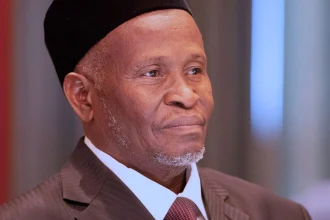Saudi Arabia announced on Sunday that over 1,300 pilgrims died during this year’s Hajj pilgrimage, primarily due to the intense heat.
The official Saudi Press Agency reported that most of the deceased did not have official permits and had walked long distances under direct sunlight without adequate shelter.
“Regrettably, the number of mortalities reached 1,301, with 83 percent being unauthorized to perform hajj and having walked long distances under direct sunlight, without adequate shelter or comfort,” the SPA reported.
An AFP tally last week, based on official statements and reports from diplomats, had put the death toll at more than 1,100. The deceased came from more than 10 countries, including the United States and Indonesia, with some governments still updating their totals.
Egyptian diplomats reported that Egyptians accounted for 658 deaths, 630 of whom were unregistered pilgrims. The cause of death in most cases was heat-related, as temperatures in Mecca reached as high as 51.8 degrees Celsius (125 degrees Fahrenheit).
Until Sunday, Riyadh had not publicly commented on the deaths or provided its own toll. However, a senior Saudi official gave AFP a partial toll of 577 deaths for the two busiest days of the hajj: June 15, when pilgrims gathered for prayers on Mount Arafat, and June 16, when they participated in the “stoning of the devil” ritual in Mina. The official stated, “The state did not fail, but there was a misjudgement on the part of people who did not appreciate the risks.”
Saudi Health Minister Fahd Al-Jalajel described the management of the hajj this year as “successful,” according to SPA. He mentioned that the health system provided over 465,000 specialized treatment services, including 141,000 services to unauthorized pilgrims. Jalajel did not specify the number of deaths attributed to heat but noted that the health system addressed many cases of heat stress.
The hajj is one of the five pillars of Islam, which all Muslims with the means must complete at least once in their lives. This year, 1.8 million pilgrims participated, with 1.6 million coming from abroad. The mainly outdoor rituals have fallen during the sweltering Saudi summer in recent years, and next year the hajj will take place earlier in June, potentially in cooler conditions.
A 2019 study by the journal Geophysical Research Letters warned that due to climate change, heat stress for hajj pilgrims will exceed the “extreme danger threshold” from 2047 to 2052 and 2079 to 2086, with increasing frequency and intensity as the century progresses.
Hajj permits are allocated to countries on a quota system and distributed by lottery. The steep costs spur many to attempt the hajj without a permit, risking arrest and deportation. Before the hajj, Saudi authorities had cleared hundreds of thousands of unregistered pilgrims from Mecca. However, the Saudi official told AFP that around 400,000 unregistered pilgrims took part, most of them from Egypt.
On Saturday, Egyptian Prime Minister Mostafa Madbouly ordered 16 tourism companies to be stripped of their licenses and referred their managers to the public prosecutor over illegal pilgrimages to Mecca.
The rise in deaths among unregistered Egyptian pilgrims was linked to companies organizing hajj programs using personal visit visas, which prevent holders from entering Mecca via official channels.
These unregistered pilgrims often lacked access to amenities like air-conditioned tents, and some struggled to access hospitals or ambulances, leading to fatalities.











